Nearly everyone you talk to in North Carolina knows, or has heard of, Loblolly Pine, if for no other reason than that it’s a rather interesting and fun to say name (we’ll get to the name later). When you walk around the trails of the outdoor exhibits here at the Museum you can’t help but to see these tall straight pines everywhere you look. They’re quite common in the Piedmont of North Carolina.
There’s another pine here at the Museum, and elsewhere in the Piedmont, that grows as tall as, and which may be confused with, the loblolly. That tree is the Shortleaf Pine.
If you stand at the Cafe Plaza, in front of the Butterfly House, or at the Train Station you should be able to see both of these trees side-by-side. How do you tell the difference between the two trees?
Note: Shortleaf and loblolly hybrids occur both naturally and under controlled conditions. You should, however, be able to separate most trees of the two species with the characteristics give here.
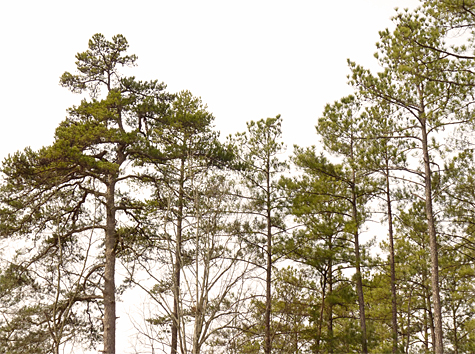
The Loblolly Pine (Pinus taeda) usually grows to about 90-100 feet, but may grow taller. Shortleaf Pine (Pinus Echinata) often grows as tall as the loblolly. No real difference there. Loblollies grow in both wet and dry situations whereas the shortleaf likes it a bit drier, but, as you can see here at the Museum, they can grow side by side.
The first obvious differences in the two trees is in the attitude of the branches. From a distance the general shape of the trees is your first clue. The loblolly’s branches appear more graceful, growing straighter and longer than the shortleaf, often gently drooping downward. The shortleaf’s branches are often gnarled looking, bent, sometimes forked and the entire tree has the appearance of being more bristled or coarse than the loblolly. The shortleaf looks “harder” than the loblolly and usually has a more defined crown.
The bark of both trees appears similar, both are red-brown, although the scaling on the loblolly tends to be larger with deeper furrows, especially on mature trees. But this is not always obvious and varies with the age of the tree.
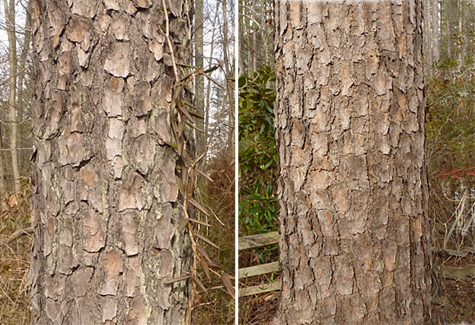
A closer look reveals small resin spots on the bark of the shortleaf, no other pine in our area has those spots.
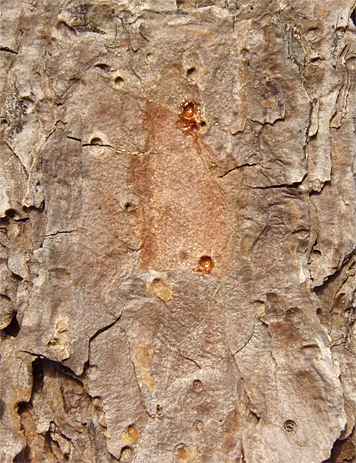
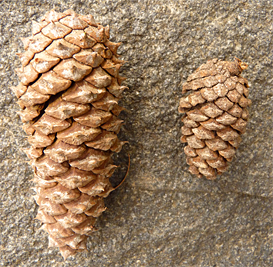
Once you get close enough to see the spots on the bark, look down at the ground for any needles or cones at your feet.
The loblolly’s cones are larger than the shortleaf’s. Look even closer. Notice the sharp prickles on the scales of the loblolly’s cones? The shortleaf usually has rather dull tipped scales on its cones.
If prickles are present at all on the shortleaf’s cones, they’re blunt and don’t hurt if you pick up the cones and toss them about in your hand.
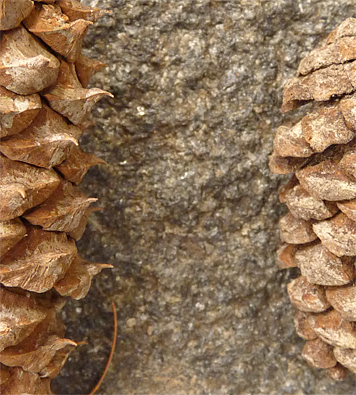
The needles? As you might expect, the shortleaf has short needles, not the shortest of the pines, but certainly shorter than the loblolly’s needles. Also, the loblolly usually has 3-4 needles in a bundle where the shortleaf usually has 2-3 per bundle.
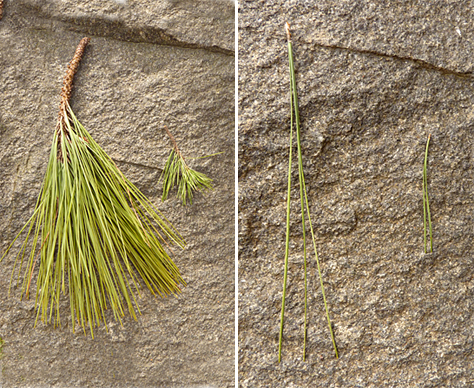
There are other differences between the two trees but this is really all you need to know to distinguish one from the other here at the Museum.
By the way, the name loblolly has many meanings. I once read a book in which it was explained that the loblolly pine gets its name from the large scales and deep furrows on its bark. It was further explained that the bark resembles the dried bed of a lake, with its large, dried and cracked mud. If you’ve ever seen a dried up lake (Falls Lake a few years back) you know what I’m talking about. I like that explanation. Unfortunately, I’ve not been able to find that interpretation of the name loblolly pine written down anywhere else but in that book.
What I have found is that in the south a lobllolly is a mud hole or mire. Some say that since the tree likes to grow in wet places, like a loblolly, this is where the name originated. The tree may very well grow in wet swampy areas, but it also grows in dry upland areas, so that meaning of the name doesn’t quite add up for me. I’ll stick with the dried lake bed explanation. The bark resembles the bed of a dried up mud hole, or loblolly!
If you do happen to research the word loblolly you’re likely to find other meanings of the word, most with nautical connections; a thick stew or gruel, loblolly boy (either a ship surgeon’s assistant, or a steward who serves loblolly, the stew), or a loblolly doctor. You might even come across “lolly-banger,” the ships cook, or him what makes the loblolly (stew/gruel).
Have fun, and let me know what you find out.
Great information, thanks for sharing!